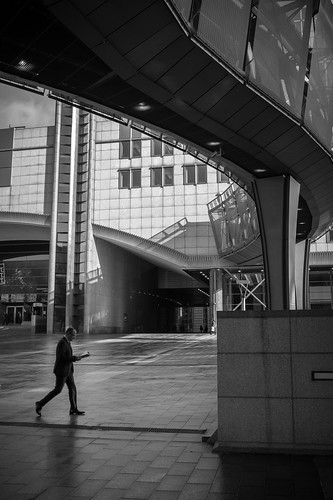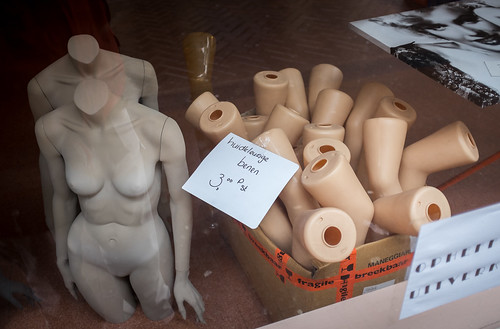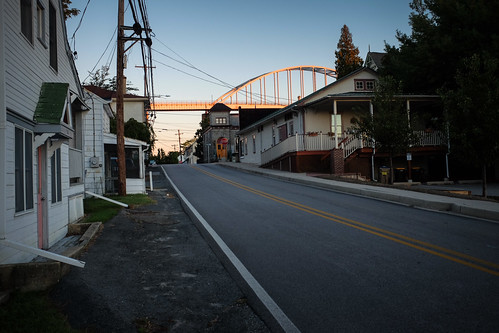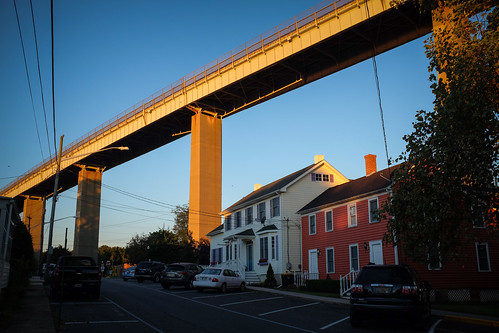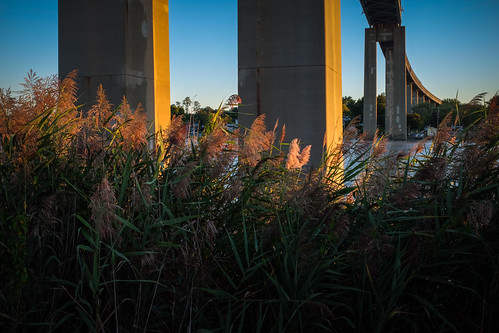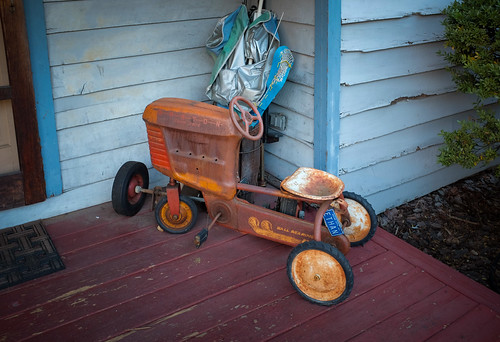The Fuji XF35mm (53mm equivalent), F1.4 lens did a great job. 1/1000, f2.8 at ISO 200.
I was headed to New York City on a seven-day assignment to cover Fleet Week for the Navy and thought it would be the perfect time and location to test a Fujifilm X-Pro1 outfitted with an XF 35mm f1.4 lens I rented from BorrowedLenses.com.
I have been a fan of the Fuji X cameras since I purchased an X-10 in 2012. Then after spending in 2013, I immediately ordered one for myself and I still carry and shoot with it almost daily. Would I love the X-Pro1 as much as these previous cameras?
The X-Pro1 is not a new camera, in fact, it has been around since March 2012 and there is no shortage of reviews and testimonials from photographers who really like this camera. So why am I just writing about it now? Well maybe it's because I was so wrapped up in my X100S that I never really considered another APS-C camera, or maybe it's because I started seeing rumors about an X-Pro2. Whatever the reason, I figured it was time – probably long overdue, that I gave this camera a try.
A little bit of rain didn't bother the X-Pro1, but did offer some nice scenes to photograph. When shooting on the streets in large cities, I find crosswalks and street corners offer plenty of opportunities. 1/125, f5.6 at ISO 640.
Since there has already been so much written about the X-Pro1, and it really is similar in functionality to the X100S, I decided to skip most of the technical details about this camera and concentrate more on how I set up and used this camera during a week of street photography in New York City. But don't worry, I will still point out the differences to the X100S as they come up.
Of course, there is one major difference between the X-Pro1 and the X100S, interchangeable X mount lenses. In 2012, Fuji originally offered three lenses; a 60mm (91mm) f2.4 macro, 18mm (27mm) f2 and the aforementioned 35mm. As of this posting, there are now at least nine additional lenses, including zooms and offerings from other manufacturers, including Carl Zeiss. It never bothered me that the X100S was a fixed 35mm equivalent, since you work with what you have, but perhaps on a few occasions it would have been nice to have options. That said, I only had the 53mm lens available to me during the trial period, so I made that work and admit I enjoyed the change.
In street photography, you have to always be ready to shoot. In this case I noticed the Fleet Week sign and the man loading kegs as I walked by. I quickly turned and got off about a dozen frames before I moved on. 1/125, f5.6 at ISO 500.
FIRST IMPRESSIONS
The X-Pro1 has a great feel, classic look and you get the sense that it is just made for the streets. Physically, it is slightly larger and a bit heavier than the X100S, but continues to feel comfortable and natural in your hands. The XF35mm lens did protrude from the camera body more than I expected and took me a while to get used to. I've noticed many of the new lens offerings look huge and somewhat awkward on these APS-C cameras.
The Hybrid Viewfinder is similar the X100S, except it will update views based on lens choice. I still prefer the Optical viewfinder (OVF) over the Electronic viewfinder (EVF). I find the EVF darker than I would like and just a bit artificial. The OVF feels open and I like how I can see what is happening just outside the frame which is helpful, especially in street photography.
I was still able to get that wide angle feel I'm used to with the X100S even though the XF 35mm is a 53mm equivalent lens. 1/1200, f5.6 at ISO 200.
Again, the button layout and functionality is also similar to the X100S. I think the placement of the AE/AF-lock button is in a better location and therefore, I found myself using it more often. You can also choose a focus area quickly by pressing the AF Button and then using the selector to move your focus point within the frame. Pressing the MENU/OK Button will return the focus point to the center. It takes some practice, but getting used to the focus features on the X-Pro1, like the X100S, is key to getting the most out of your camera.
MY SETTINGS FOR SHOOTING ON THE STREETS
Set the AF Illuminator to OFF. The purpose of this light is to assist with autofocus in low light situations, but using the camera in lowlight situations is also the time you probably don't want to draw attention to yourself, or telegraph that you are about to take a photo. I didn't notice any focus issues, even in some fairly low light, with the AF Illuminator off.
Place gaffer's tape over the Indicator Lamp. For the same reason I set the AF Illuminator to OFF, I prefer to cover over the Indicator Lamp on the back of the camera. I'm not so worried I'll be discovered or afraid of the interaction, however, if I can get a few frames off without being noticed, I prefer that.
Set Operational Volume off. Are you seeing a trend here. Plus no shutter noise is a real advantage of mirrorless over DSLR. Even my Nikon's quiet mode can't compete with silence.
Using Auto ISO meant that I could shoot all day in and out of the shadows and then well into the night without thinking about it. 1/125, f1.4 at ISO 2500
Use Auto ISO. I like the thought of moving in and out of various lighting situations and not having to change ISO each time. You can assign ISO to the Fn (function) Button which speeds up the process, but if you don't have to worry about it, why do so. Within auto ISO, there are a few considerations you need to take into account, though. For instance, I set the max ISO to 3200, but the lowest shutter speed to 1/125. Prior to making that choice, the camera would favor ISO and I found my shutter speed kept dropping too low which in some cases resulted in blurred photos.
New York City and Times Square is a busy and crowed place. The small form factor of the X-Pro1 is perfect in these situations and most people hardly notice you taking photos. A real advantage in street photography. 1/125, f2.0 at ISO 320.
Set Film Type to Monochrome. Just like with the X100S, I set up the camera to shoot both raw and jpeg allowing me to shoot and preview my photos in black and white, but still have the color originals available during post production. I further set the film simulation mode to monochrome plus yellow filter which offers slightly increased contrast while toning down the brightness of the sky. I've always associated street photography with black and white which why I favor this setup.
I used continuous shooting (burst mode) set to six frames per second (max for this camera) to capture this photo in Coney Island. 1/300, f11 at ISO 200.
Remaining settings. Aperture-priority AE (A) mode, turn off display back (Viewfinder Only), focus mode set to Single Focus.
SOME FINAL THOUGHTS
The X-Pro1 did seem to focus quicker than the X100S, but there was still a bit of lag when coming out of standby mode. I missed a few shots because of this which was a reminder to always make sure the camera is awake and ready.
UPDATE:
Under Power Management turning the Quick Start Mode to ON is supposed to reduce camera start up time except I failed to test this and only noticed it in the instruction manual recently. And sure enough there is a similar feature available on the X100S, so I may have found a solution. More to come.
In street photography, scenes like this happen quickly and having the camera awake and ready to shoot is key. 1/125, f1.4 at ISO 2500.
What appealed to me about the X100S was its simplicity. And I wondered if adding interchangeable lenses would detract from that? Hard to answer since as I mentioned previously I only had the XF 35mm available to me during the trial period, but even if I had other options available, I tend to pick a lens and stick with it. Although picking a Fujifilm XF 60mm f2.4 macro lens one day and then a Zeiss 12mm f2.8 Touit series the next would be a fun option to have.
I know there are other new X offerings from Fuji like the XE-2 and the XT-1, but I really love the rangefinder styling of the X100S and X-Pro1. The XT-1 has been getting a lot of favorable reviews and I'm looking forward to testing it in the future.
However for now, I've gone back to shooting with my X100S and really am not looking to change anytime soon. That is unless the X-Pro2 rumors pan out.


















